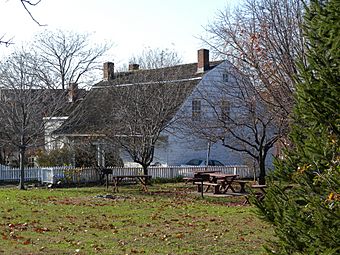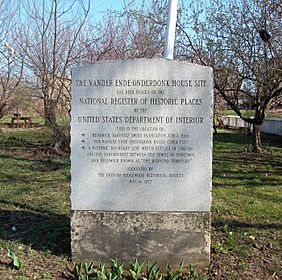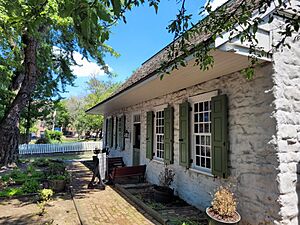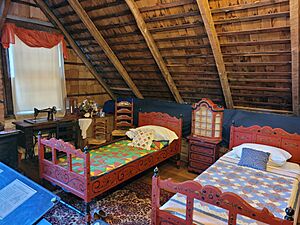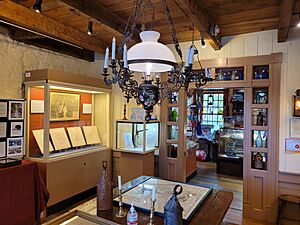Vander Ende–Onderdonk House facts for kids
The Vander Ende–Onderdonk House is a very old and important house in Ridgewood, Queens, New York City. It is also known as the Van Nanda House. This house is special because it is the oldest stone house in New York City built in the Dutch Colonial style.
Today, the Greater Ridgewood Historical Society owns the house. It works as a museum, showing what life was like in New York a long time ago.
Contents
History of the House
Building the First Parts
The very first part of the house was built in 1661. A man named Hendrick Barents Smidt built it. He received the land from Peter Stuyvesant, who was a leader of New Netherland.
Later, in 1709, another part was added to the house. This expansion was built by Paulus Vander Ende.
Family Changes and Ownership
Paulus Vander Ende's son, Frederik, inherited the house. Frederik changed his last name to Van Nanda. In 1769, Frederik's daughter Jane and her husband, Moses Beadel, became the next owners.
The house is very close to the border between Kings and Queens counties. It was even mentioned in a survey in 1769 that set this important boundary. The Onderdonk family bought the property in 1821.
Changes to the Land
The property used to be very large, with about 100 acres of farmland. Over time, parts of the land were sold. Now, the property is much smaller, less than two acres.
Fire and Restoration
In 1975, the house had a serious fire. Many of its wooden parts were destroyed. Because the house is so important, it was added to the National Register of Historic Places in 1977.
The building was repaired in the early 1980s. The repairs cost a lot of money, about half a million dollars, which came from federal funds. Since it was a historic building, it was rebuilt using the same tools and styles from the colonial era. In 1995, the New York City Landmarks Preservation Commission officially named it a landmark.
The Arbitration Rock
In 2001, an old rock called the Arbitration Rock was found again. This rock was used in the late 1700s and early 1800s to help measure property lines. In August 2001, the Arbitration Rock was moved to the backyard of the Vander Ende–Onderdonk House.
Gallery
See also
- List of the oldest buildings in New York
- List of New York City Designated Landmarks in Queens
- National Register of Historic Places listings in Queens County, New York


